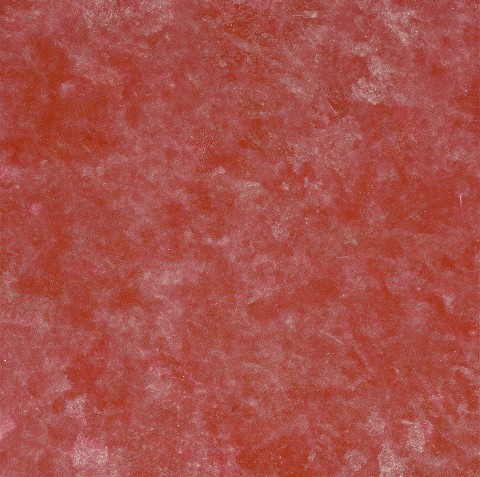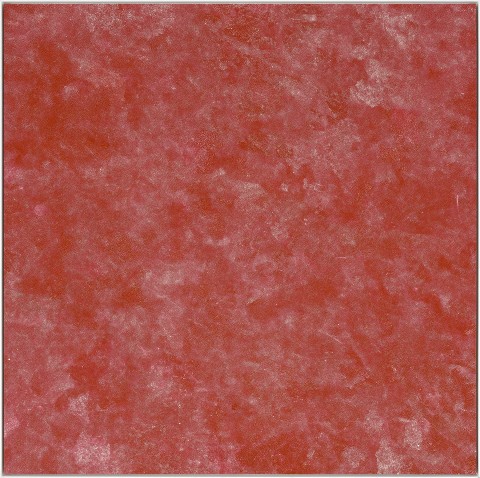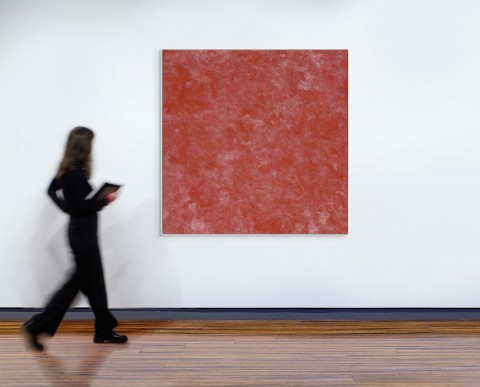ANOOKITJA (BUSH PLUM), 2019
ANGELINA PWERLE (NGALE)
synthetic polymer paint on linen
151.5 x 151.5 cm
bears inscription verso: artist's name, title, Artlore (Marc Gooch) cat. 1–419 and Niagara Galleries cat. 21403
Painted at Rocket Range, Utopia, via Alice Springs, Northern Territory
Niagara Galleries, Melbourne (label attached verso)
Private collection, Sydney
Angelina Pwerle: Bush Plum and Beyond, Niagara Galleries, Melbourne, 7 – 24 July 2021, cat. 3 (label attached verso)
Angelina Pwerle painted her first work on canvas, Rainbow Awelye, for ‘A Summer Project’ – the December 1988 Utopia art survey in new media (acrylic paint and canvas). The majority of artists participating in this landmark show were members of the Utopia Women’s Batik (UWB) Group with a decade of batik practice behind them. Angelina Pwerle was one of the few exceptions. For her, ‘A Summer Project’ presented, rather, the earliest opportunity she had to join with the larger UWB group before becoming a pre-eminent artist in her own right, as did a handful of others who emerged in the Project’s creative aftermath.
The first painting project was initiated by Rodney Gooch, the dynamic manager of CAAMA Shop, which was also the agency for Utopia artists.1 Gooch was pivotal in translating the distinguished Utopia batik movement into a new dimension. Paint and canvas were rapidly followed by other experimental projects and developments, including sculpture. It was in this fertile period of the 1990s that Angelina Pwerle, with the support of her Melbourne dealer, Niagara Galleries, established a singular presence in the fields of painting and sculpture. Pwerle (also known by the skin name Ngale) thus entered the new millennium as one of Utopia’s leading artists, with her figurative sculptures and mesmeric, often monumental paintings of Arnwekety (the ‘Bush Plum’) attracting a strong following. This creation story, belonging to the artist’s ancestral country, Ahalpere, was also central to a small school of Bush Plum painters based at Camel Camp where Angelina has mainly resided throughout her career.
However, in October 2016, following the death of her close friend, Gladdy Kemarre, who was also a celebrated painter of the Bush Plum, Angelina moved away from Camel Camp. Entering a period of deep mourning named ‘sorry business’, she initially relocated to a camp called New Store at Arlparra; after this transition, she did not paint for her Artlore agents for over a year. Then, in March 2018, she moved to Rocket Range where she resumed painting in the supportive company of the Morton family with whom she shared a long association. The positive outcome of this move for Angelina is reflected in the energy, scale, and superb technical mastery of this large canvas painted a year later in April 2019.
Unique to Angelina Pwerle’s ‘Bush Plum’ paintings for Niagara Galleries is the use of a single wooden skewer to execute her signature dot work, differentiating the paintings from others in which she used bundles of skewers to achieve her all-over mark making. For this reason, she affectionately refers to Niagara Galleries director Bill Nuttall as ‘Bill one-stick’. Anookitja (bush plum), 2019 is a densely articulated single stick painting and one of the last in which she used this demanding technique.
Covered in the soft nebulae of fine marks that characterise earlier paintings, the surface of Anookitja (bush plum) is more strongly inflected. The canvas is a highly active field, an extract of country densely signposted with topographic elements—tracks, paths and mounds formed from dots. Fine angular road-like lines, short and long, criss-cross the canvas. Elsewhere, dots cluster in groups of greater or lesser transparency, anchoring the viewer to the surface or drawing the eye to looser aggregations that act like portals to the beyond. Unusual are the solitary, bright points of white, pinpricks lighting up the canvas like the desert outposts seen through the window of a plane at night – lights that make you wonder who is there and what is going on. Yet, however much Angelina Pwerle’s abstractions might draw the viewer into subjective reveries and speculation, they are nevertheless only ever about the real world of Arnwekety and Ahalpere, ancestor and country.
1. I would like to thank Artlore’s Marc Gooch and Janet Pierce for conversations about the work of Angelina Pwerle whom they represented for over fifteen years.
ANNE BRODY


